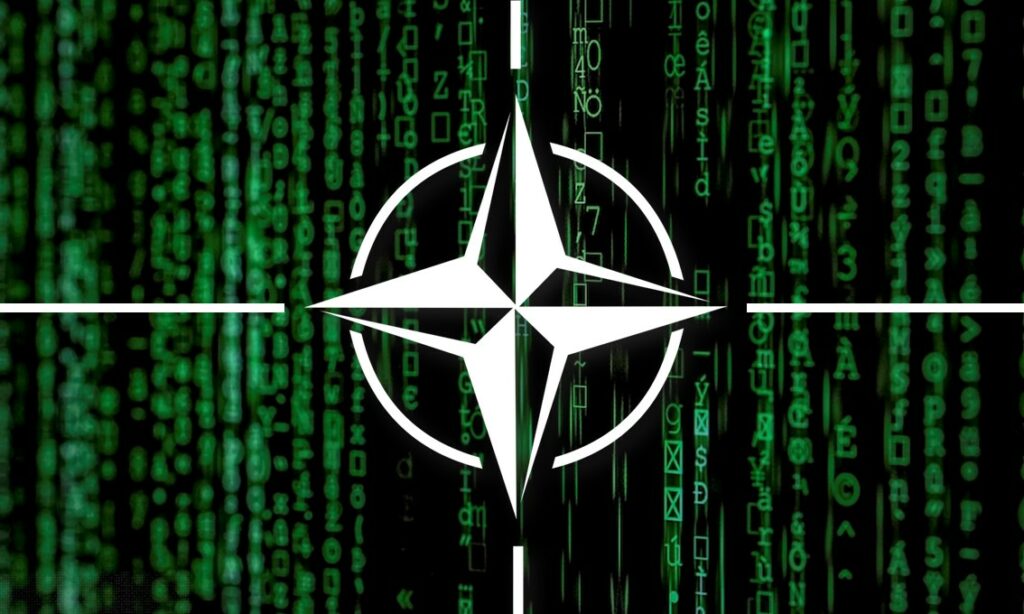
Paolo Galdieri : 27 June 2025 22:14
In the heart of contemporary conflicts, alongside tanks, drones and troops, an invisible, silent and often underestimated war is being fought: cyber war.
It is not just a futuristic scenario or a hypothetical threat. It is reality. From the conflicts between Russia and Ukraine, to the parallel attacks that occurred during the clash between Israel and Hamas, to the recent tensions between Israel and Iran, cyberspace has now become a real battlefield.
Cyberspace is no longer just the environment where computer fraud, child pornography dissemination or unauthorized access are carried out. It has been officially recognized by NATO as the fifth domain of warfare, alongside land, sea, air and space. This means that offensive and defensive operations conducted through information systems can have the same strategic and geopolitical weight as conventional attacks.
In the context of international relations, cyber warfare is distinct from other digital activities such as cyber crime, info warfare, cyber terrorism or state digital surveillance.
Here we are talking about real attacks carried out by one State against another, with the aim of destabilizing, sabotaging or strategic acquisition of sensitive data.

One of the great open questions is the legal one: how are cyber conflicts regulated? Do we need a “tailor-made” law for cyberspace?
The prevailing position, also supported by the United States, is that the rules of international law – both in times of peace and war – also apply in cyberspace. However, evident critical issues remain:
According to many experts, a cyber attack becomes “armed” if it produces physical damage, deaths or destruction of critical infrastructures. In this context, we speak of a cyber weapon when the attack:
For the United States Department of Defense, cyber operations are divided into:
Only CNAs that pose a threat or use of force would fall under the scope of cyber warfare. The others are more properly placed in the context of espionage or information warfare.

Article 5 of the North Atlantic Treaty, signed in 1949, provides that:
“An armed attack against one or more members of the Alliance shall be considered an attack against them all, and each of them shall take such measures as are necessary to assist the attacked State, including the use of armed force.”
Originally, this provision was intended for conventional military attacks (land, sea or air). However, since 2014 – particularly after the hacker attacks on Western infrastructure and the annexation of Crimea – NATO has officially extended the concept of “armed attack” to cyberspace as well.
A cyber attack can theoretically trigger Article 5 if it reaches a threshold comparable to a conventional armed attack in terms of:
In 2007, Estonia – a NATO member – suffered a massive cyber attack attributed to Russian groups: Article 111 of the 2007 NATO Cyber Attack Act was not activated. 5, but since then NATO has established the Cyber Defense Center of Excellence in Tallinn.
In conclusion, Article 5 can be applied to cyber warfare, but only in the presence of strong evidence, serious impacts and proven state responsibility. The Atlantic Alliance is still cautious: cyberspace is a fluid battlefield, where the wrong response risks degenerating the conflict rather than containing it.
Therefore, Article 5 today is more of a political than an operational tool in cyber warfare: it serves to dissuade potential attackers, but its concrete implementation remains exceptional and full of complex legal and diplomatic implications.

The urgency of protecting ourselves from these threats is demonstrated by a series of regulatory and strategic acts, both international and national. In the European context, the NIS Directive of 2016, the G7 Taormina Document and the Tallinn Manuals stand out, real legal references on the subject.
In Italy, the regulatory effort has materialized in measures such as:
The two Tallinn Manuals (2013 and 2017), drafted by an international group of experts under the aegis of the NATO Centre of Excellence for Cyber Defence (CCDCOE), represent the most advanced attempt to give a legal interpretation to the role of international law in cyberspace, in the absence of specific binding treaties.
The first Manual focuses exclusively on situations of armed conflict: that is, it applies when cyber warfare joins or accompanies a conventional war. It analyses how the rules of international humanitarian law (or the law of war), such as the Geneva Convention, and those of general international law, including the principles of:
It also defines what can be considered “use of force” in the cyber field, distinguishing between disruptive actions (e.g. DDoS) and destructive attacks on critical infrastructures, which can potentially justify a military response.
The second Manual greatly expands the scope of the first. It focuses on cyber operations that occur below the threshold of armed conflict, i.e. in peacetime, and often in the absence of official declarations of war.
Tallinn 2.0 addresses new crucial issues:
If the first Manual represents a sort of “Emergency Manual” for cyber warfare, the second is a real encyclopedia of international law applied to cyberspace, also useful for preventing escalations and promoting responsible use of digital technologies.

In the Italian regulatory landscape, three provisions represent the foundations of the national cyber defense strategy. These are Law 133/2019, Legislative Decree 82/2021 (converted into Law 109/2021) and Law 90/2024. Each of these regulatory interventions has progressively strengthened the institutional and operational architecture of cybersecurity in our country, with increasing objectives of prevention, coordination and effective response to digital attacks.
Law 133 was created to defend critical Italian digital infrastructures, both public and private, from potential cyber attacks. By converting Legislative Decree no. 105/2019, establishes the National Cyber Security Perimeter, which has two fundamental objectives:
The law assigns the Presidency of the Council, through the DIS (Department of Information for Security), a coordination role, with the collaboration of other bodies, such as the Ministry of Defense and the Interior. Furthermore, it provides for sanctions for those who do not comply with security obligations, and introduces a preventive assessment for ICT supplies in sensitive sectors.
With Legislative Decree 82, converted into Law 109/2021, Italy makes a leap in institutional quality by establishing the ACN – National Cybersecurity Agency. The Agency is responsible for:
The ACN also deals with the operational implementation of the measures provided for by Law 133/2019 and represents the single interlocutor at European and international level for cooperation in the cyber sector.
The Italian model is transformed from reactive to proactive and integrated, recognizing cyberspace as a structural element of national security.
Law 90 of 2024 has updated and strengthened the existing regulatory system, introducing specific obligations and timely reporting of cyber incidents. In particular, it provides for:
Furthermore, the law promotes the harmonization between cybersecurity and digital transition: the person responsible for the digital transition (RTD) can coincide with the cybersecurity contact person.
This is a big step forward towards a reactive but also collaborative model, which rewards speed in crisis management and imposes clear timeframes for intervention, reducing the margins of uncertainty or inaction.
Today all wars are hybrid: they are no longer fought only with conventional weapons, but extend into cyberspace, where the line between attack and defense is thin, invisible and constantly evolving. In this new dimension, alongside malware and sabotage operations, disinformation also plays a decisive role, fueled by sophisticated digital propaganda techniques, often enhanced by artificial intelligence. Fake news becomes ammunition, social networks become battlefields, and citizens’ minds become targets to be manipulated.
On the regulatory front, something is moving: international legislators – albeit slowly – are taking note of the extent of the threat, adopting laws increasingly oriented towards protecting critical digital systems, that is, those that store information vital to national security. Even in Italy, as demonstrated by laws 133/2019, 109/2021 and 90/2024, institutional awareness is now clear.
However, there remains a significant cultural delay. Computer science education, especially in the field of cybersecurity, is still marginal. Universities that train digital security specialists are few, often undersized compared to the real demand of the market and the needs of the State. In many strategic realities, the adequate technical skills to manage cyber threats are lacking, and often those who lead decision-making processes do not have full mastery of digital risks.
Furthermore, there is no clear regulatory definition of cybersecurity: it is not yet established how far a cybersecurity expert can go without incurring violations of the law. When does defense become intrusion? When does protection become abusive surveillance? These regulatory gaps create uncertainty and, in extreme cases, can even hinder the very security that is intended to be guaranteed.
In a global context in which war is fought with drones, codes and manipulated news, we can no longer afford to be left behind. Building a solid culture of cybersecurity is now a national priority, as much as equipping ourselves with traditional weapons. Because in the war of the future – which is already partly the present – the front line is made of competence, awareness and digital readiness.
 Paolo Galdieri
Paolo Galdieri